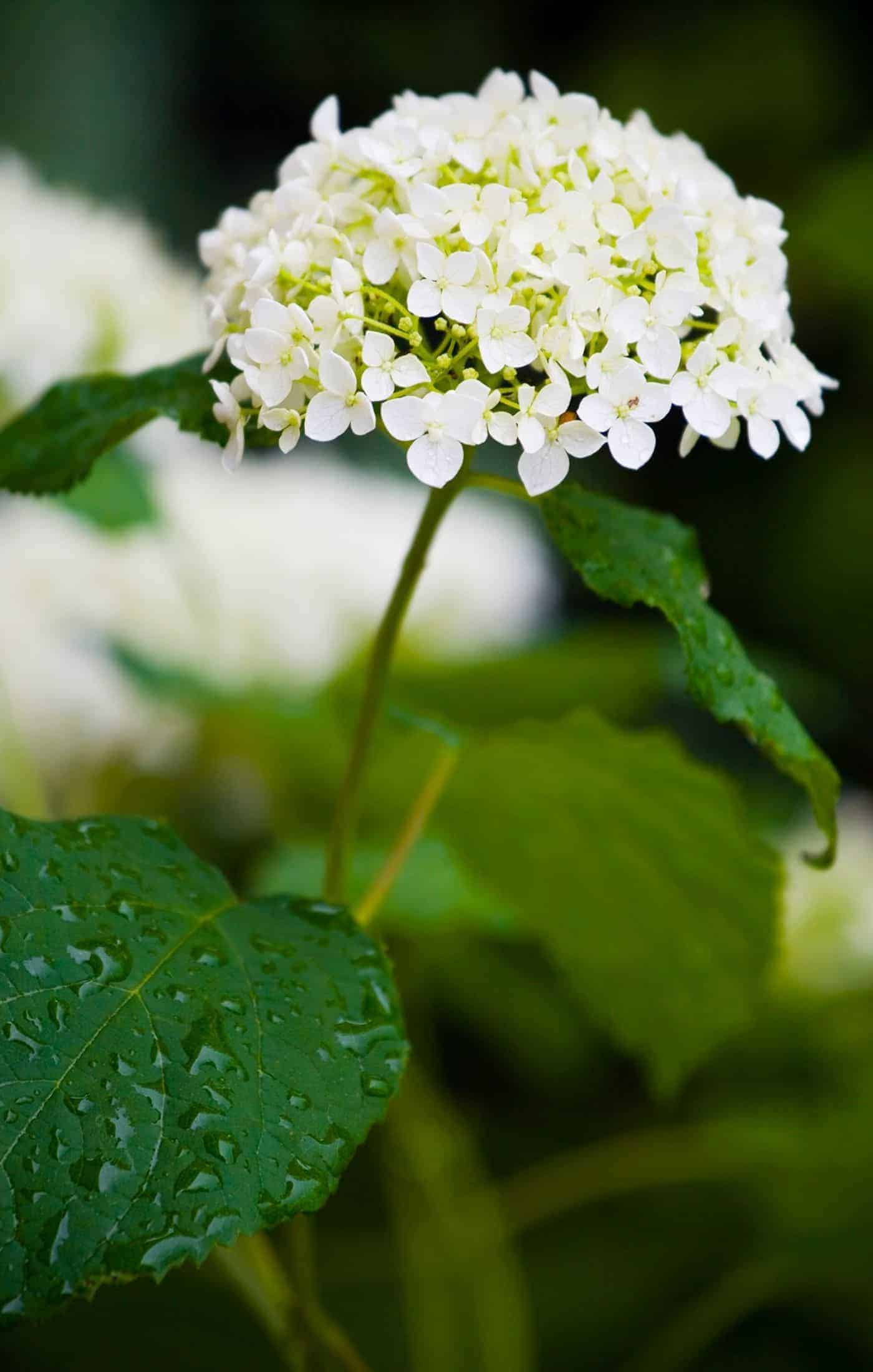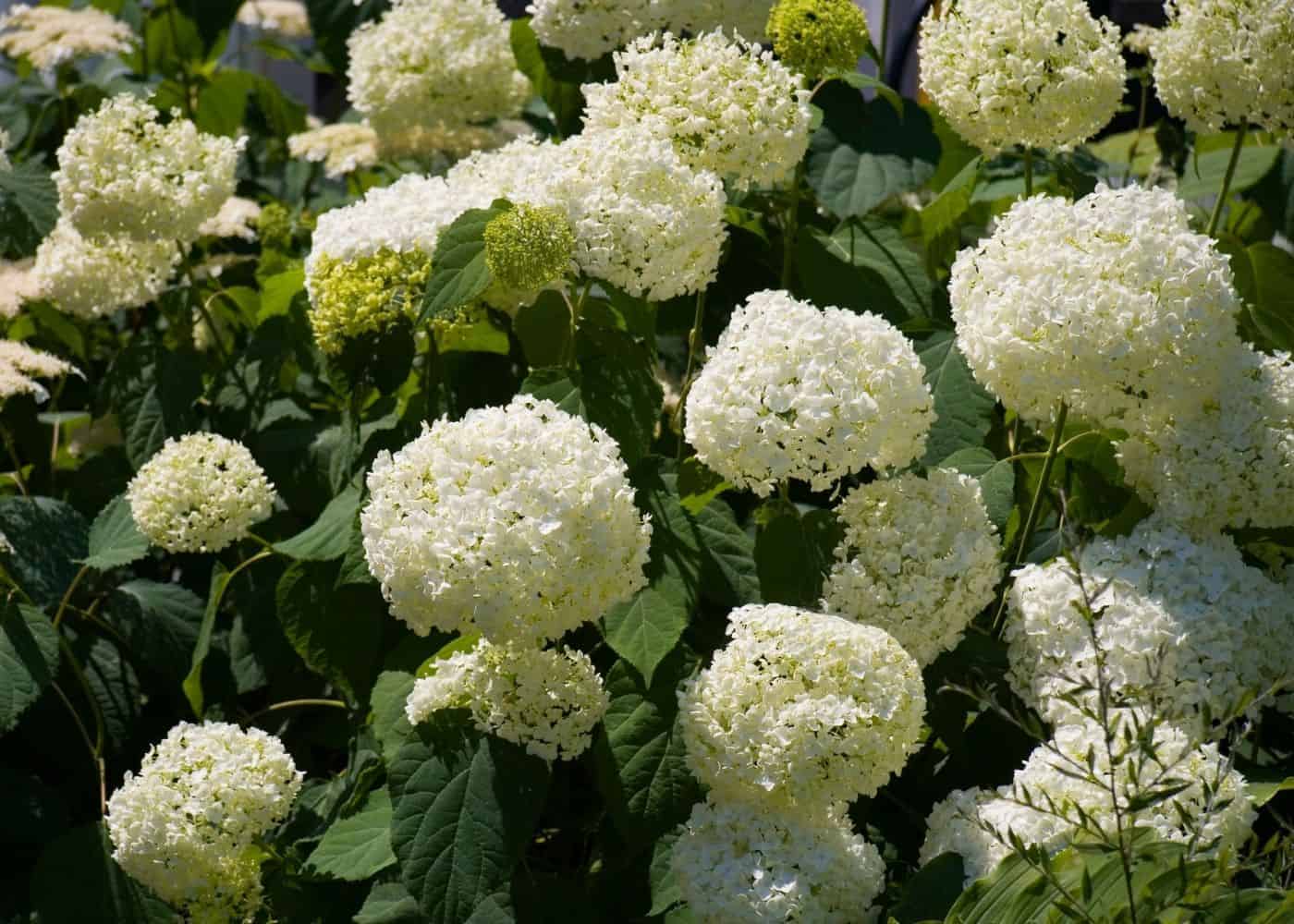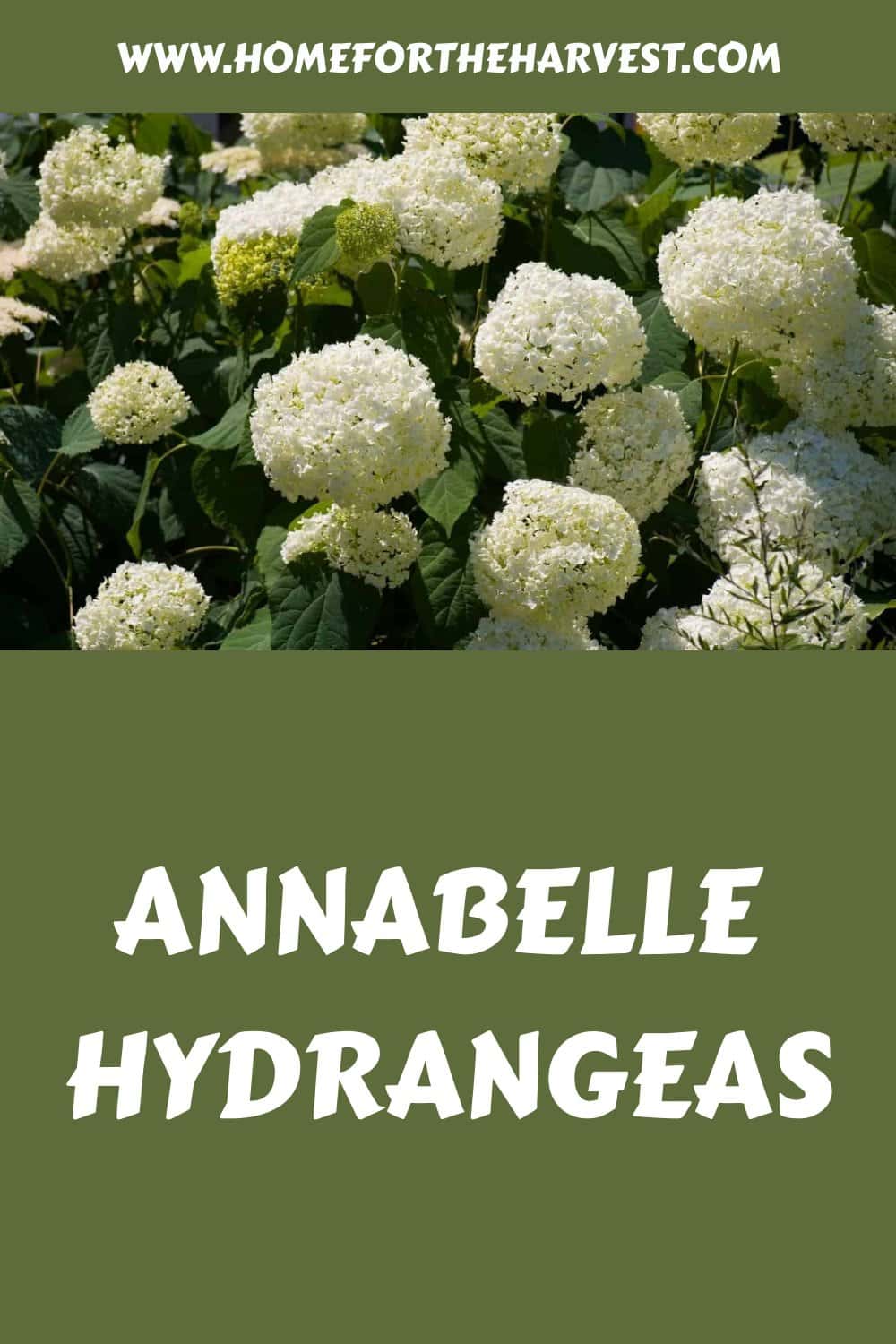Annabelle hydrangea is the most popular cultivar of Hydrangea arborescens, grown for their beautiful rounded white flower clusters. The original Annabelle hydrangea was found growing wild near Anna, Ohio.
This plant produces numerous stems of dainty white flowers that last for weeks on the plant. Annabelle hydrangeas are also known for being quite low-maintenance as they grow well naturally in many North American climates.
Annabelle hydrangea basics
Annabelle hydrangea (Hydrangea arborescens ‘Annabelle’) is the most widely grown cultivar of smooth hydrangea. Unlike other species with rounded mophead-type flowers, smooth hydrangea (Hydrangea arborescens) is native to North America. Annabelle hydrangea can be grown in Zones 3-9, making this a very versatile plant in terms of growing climate.
This variety was discovered near the town of Anna, Ohio from which it derived its name. It earned the “belle” part simply because of its beautiful blossoms. Annabelle’s blossoms are often much larger than those of its counterparts and will be on display for months and months. These aren’t short-term blooms!
“While many glamorous hydrangeas are the products of breeders’ efforts, Annabelle belies its film-star good looks with delightfully wholesome country origins. Discovered growing wild near the village of Anna in Ohio, for which the plant was named, this hydrangea is a real girl-next-door and as American as apple pie.”
Hydrangeas: Beautiful Varieties for Home and Garden Hardcover, by Naomi Slade
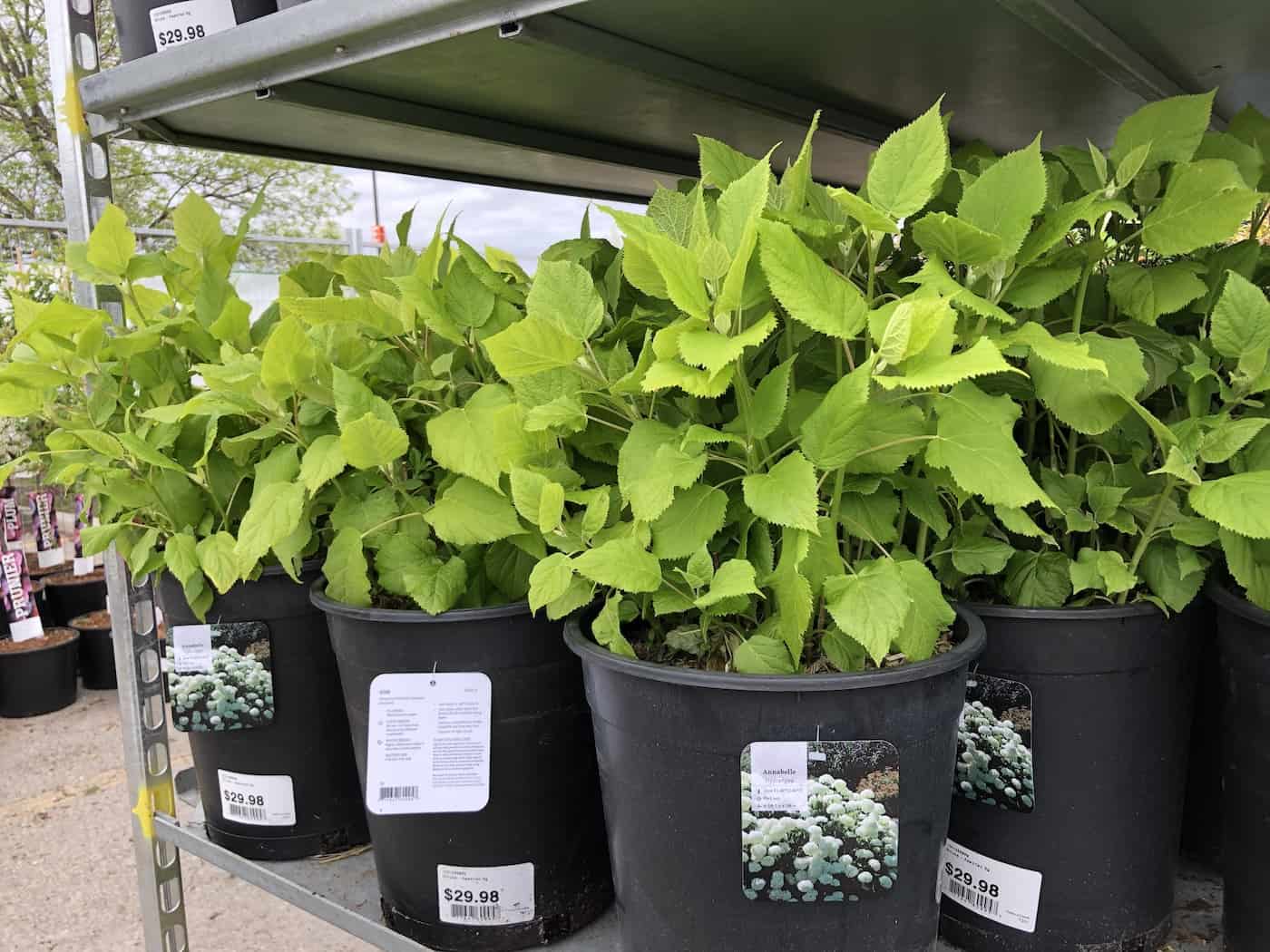
Annabelle Hydrangeas, despite looking flowery and delicate, is actually pretty hardy. They will usually bloom in June or July, with blooms aging to an antique sepia tone on the stem in the fall. They are elegant and stylish and will add a sense of sophistication to pretty much any garden out there. If you are determined to have a showy garden with flowers that will withstand rain or shine, then the Annabelle Hydrangea is just the flower you need. It will provide you with a brilliant display for the summer, fall, and even part of the winter if the flower heads are left standing.
This longevity is one of the biggest reasons why Annabelle hydrangeas are so popular. They can not only provide your outdoor garden with a stunning display, but they can also do the same for the indoors. Because they last for so long, these hydrangeas can be used as cut and dried flowers.
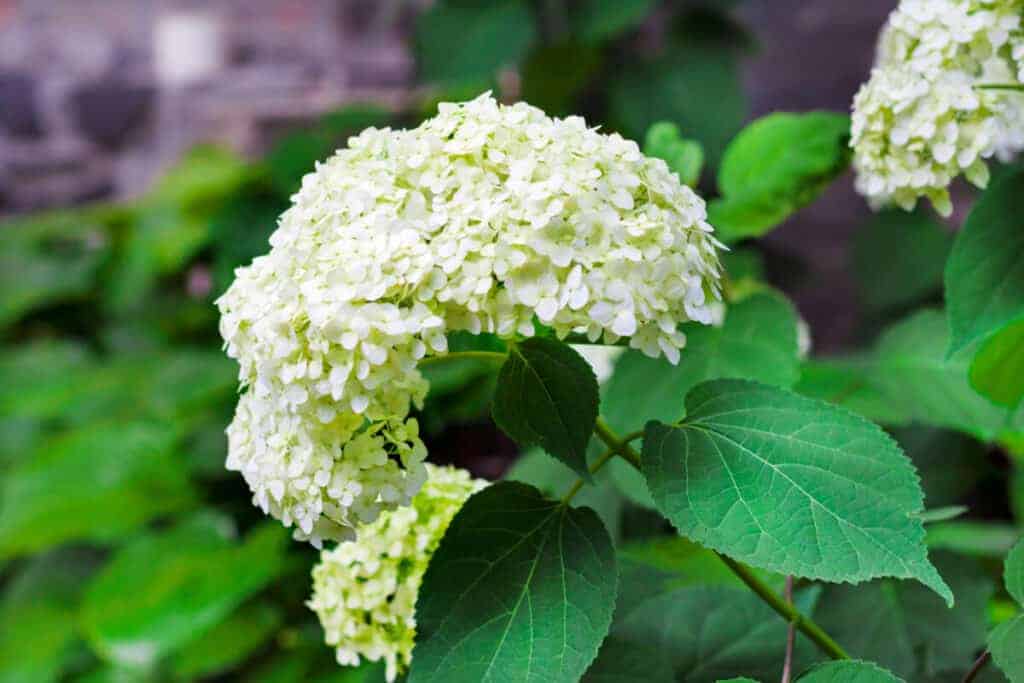
Growing and caring for Annabelle hydrangeas
Thankfully, caring for Annabelle is not a task that requires a whole lot of effort. They are low-maintenance flowers that will give your garden an impressive appearance.
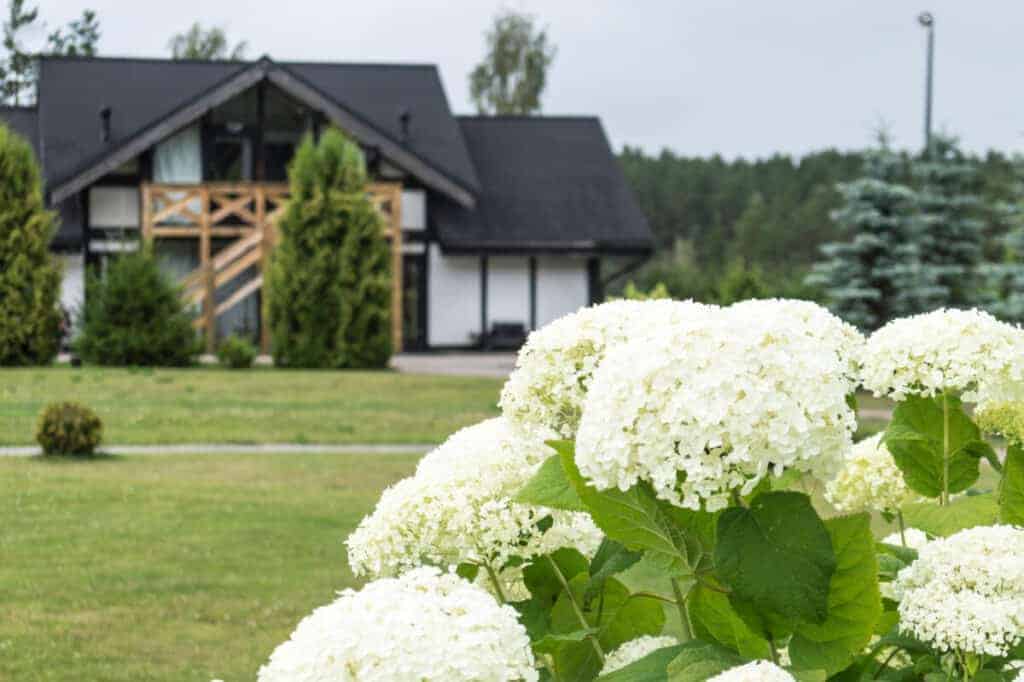
Soil for Annabelle hydrangea plants
Annabelle Hydrangeas grow best in well-draining soil with a near-neutral or slightly acidic pH. If your hydrangeas are constantly sitting in water, you will likely find yourself dealing with root rot. Using organic matter such as compost, peat moss, or something similar will drain extremely well and provide your hydrangeas with a good growing experience. As for planting them, they can technically be clustered together, but you should not put them so close together that they don’t have room for any sun between them. Be sure to water deeply after planting and water frequently for the first year.
Annabelle Hydrangea blossoms will stick around for the entire summer and most of the winter, but those blossoms are large enough that they will take quite a while to grow and get up to full size. If you get them planted as soon as possible, you should have full-grown blossoms by June or July at the very least. This means you’ll have flowers to appreciate for a good portion of the year.
Fertilizer for Annabelle hydrangea
As with most plants, you must be careful about how much and how often you fertilize your Annabelle Hydrangeas. Too little fertilizer combined with naturally poor soil means your plants will develop paleness in their leaves and poor, slow growth.
For this reason, be careful only to fertilize Annabelle Hydrangea when needed (with a granular slow-release fertilizer) and never let the fertilizer touch the leaves or stem of the plant. Sprinkle it around the plant’s base if using a granular fertilizer.
Be sure to read the instructions on the specific fertilizer you choose as application amounts and frequencies vary between brands. Read more about hydrangea fertilizers.
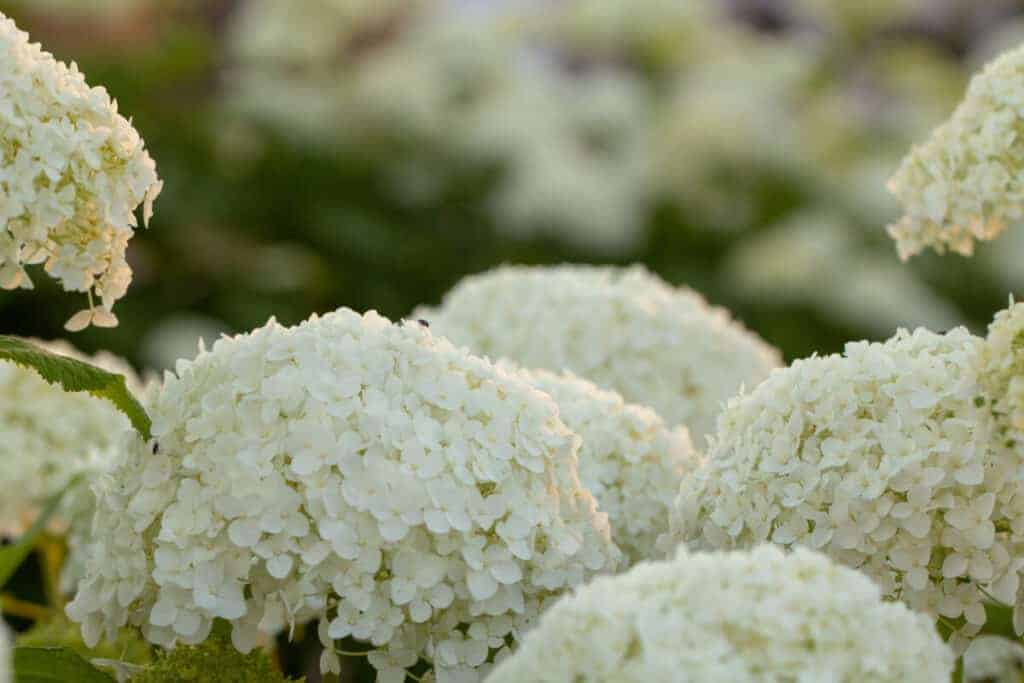
Sunlight for Annabelle hydrangea
Annabelle Hydrangeas are adaptable in terms of sunlight requirements and can be grown in most partial shade areas through to full sun planting spots. These shrubs tend to do best in full sun in the cooler end of their growing range (Zones 3-6) while appreciating afternoon shade in the hotter areas (Zones 7-9).
If the soil is kept at approximately the same level of moisture every day, you can probably afford to keep these hydrangeas in more direct sunlight. If the soil isn’t as moist as you’d like it to be, you should probably keep it in a shadier area. This may sound overwhelming and tough to figure out, but Annabelle Hydrangeas are not fussy and definitely not hard to please. Just make sure they get enough sun and plenty of water (especially right after planting), and you won’t have much to worry about.
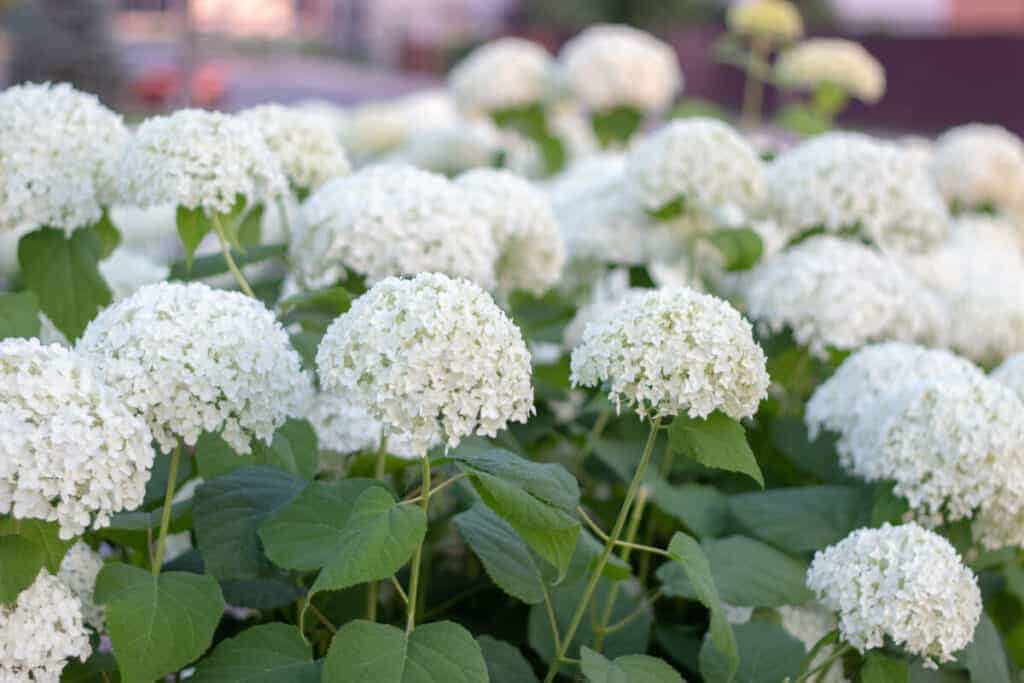
Watering Annabelle hydrangeas
Annabelle hydrangeas do need quite a bit of water to stay alive. As mentioned earlier, the amount of water they need depends greatly on their sun exposure. If they are kept in shady areas, they may only need watering once a week once established. In hot, sunny spots, these plants will likely require watering every couple of days for the first several seasons as the roots become established. Watering requirements tend to decrease as these shrubs age.
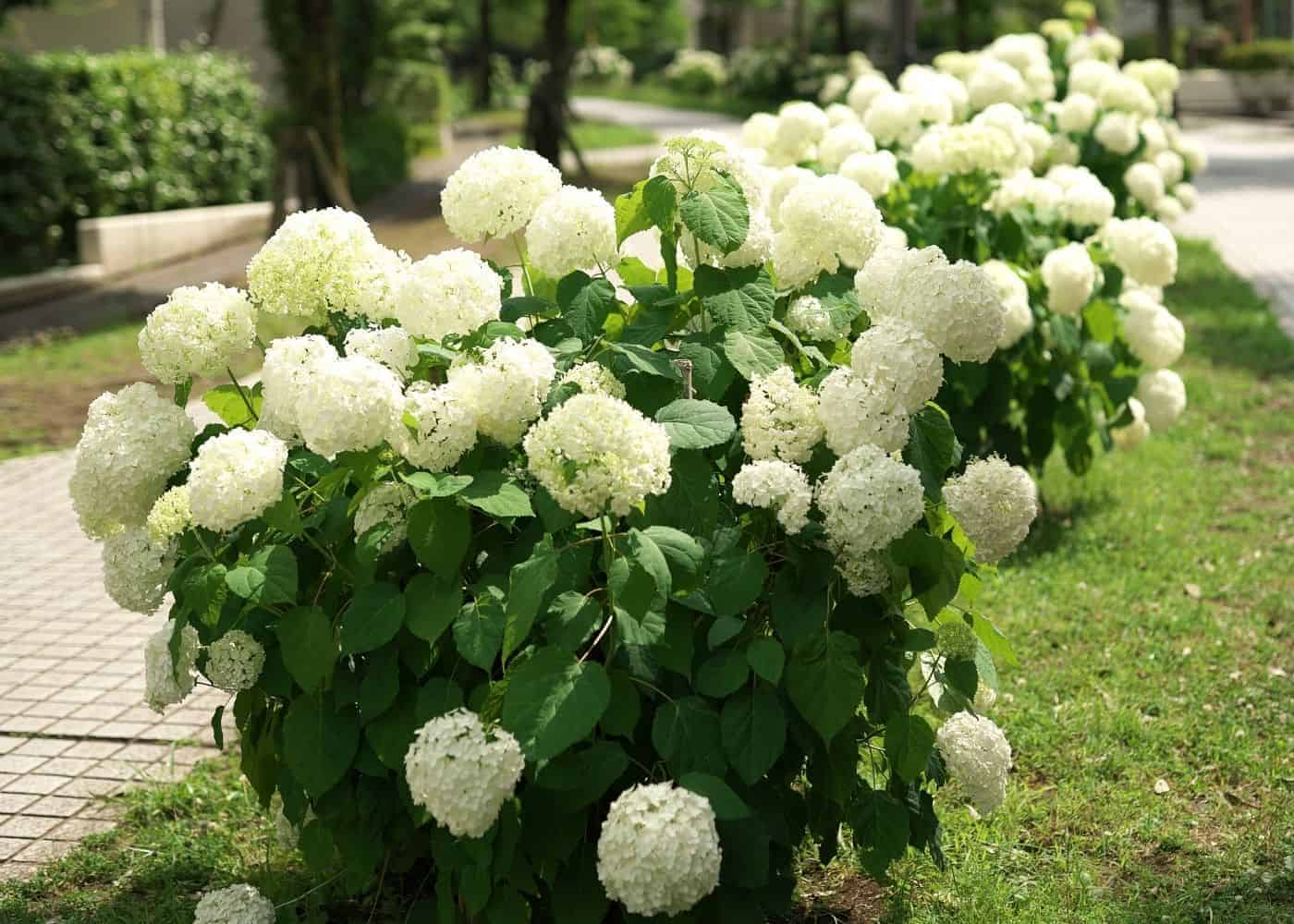
Pruning Annabelle hydrangeas
Annabelle shrubs do not require pruning but tend to grow best with some annual maintenance. The best time to prune Annabelle Hydrangea plants is typically in early spring. You can prune in the fall, but most people would recommend waiting as long as possible because, as mentioned earlier, these shrubs will likely be sporting lovely white blooms until they are covered in snow.
If you wait until early spring, you will be able to enjoy those beautiful blooms during the off-season. Take care that you remove the old wood/stems to make way for new ones. Some of these stems will die and fall off on their own, so you’d have to worry about clearing those away and cutting off any remaining ones.
In the spring, start by removing any branches that are dead, dying, diseased, or otherwise damaged. Take them down all the way to the base of the plant near the soil line. Then work to identify any crowded areas of the plant’s stem skeleton. Trim off any branches that are crossing other branches (especially if the branches are rubbing). Take these off right to the base of the plant too. Lastly, trim the remaining stems back by about 1/3 of the total height of the plant. So for a young Annabelle Hydrangea that is 3′ tall, trim back each stem to 2′. For a larger 6′ mature shrub, trim each stem back to 4′ tall.
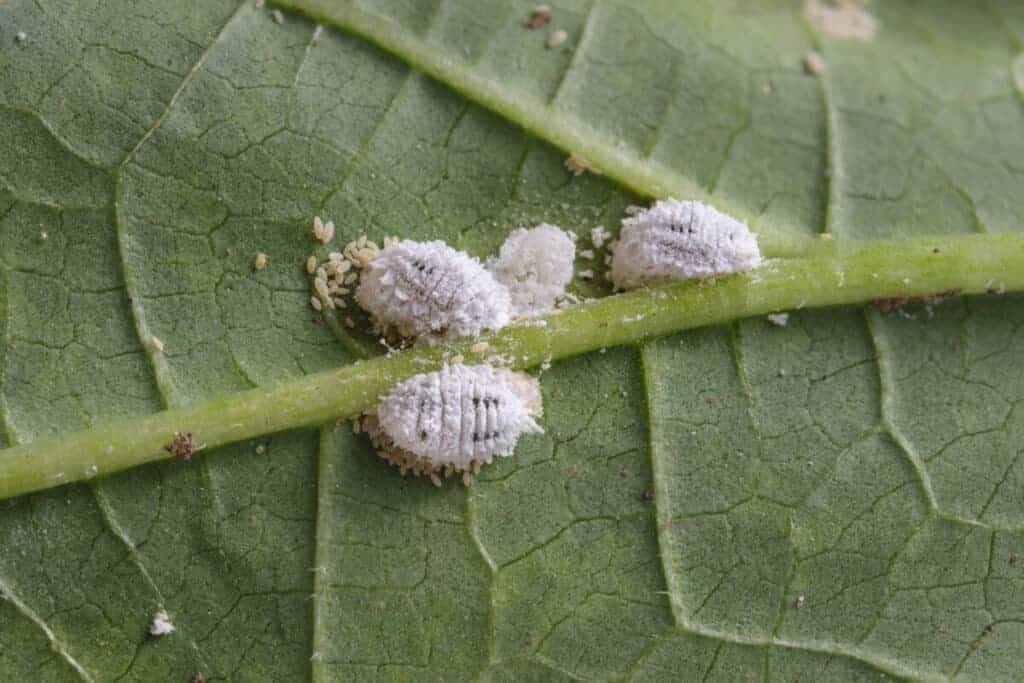
Pests affecting Annabelle hydrangea
Thankfully, there isn’t a whole lot to worry about with Annabelle Hydrangeas as far as pests and diseases are concerned. Of course, you still have to worry about all the average garden pests (aphids, mites, mealybugs, etc.), but these are surprisingly easy to get rid of.
A pest problem will likely be indicated by cottony masses collecting on your plants, strange weblike patterns, holes, or brown spots on your plant’s leaves. You may also notice that the flowers aren’t blooming as they should or the stems are becoming droopy. The effects will vary depending on the climate and pest, but these are some of the most general signs you should be looking for.
You can use organic pesticides or soaps to treat your Annabelle Hydrangeas. You should spray your plants with your solution of choice on a windless day so the effects aren’t diluted. Many insects (such as aphids) tend to feed on the underside of the leaves so make sure you are spraying down there are well.
Be thorough and treat your plants regularly; you will no longer have to worry about pests bothering your hydrangeas. Be sure to follow the application instructions and frequency guidelines for your chosen product.
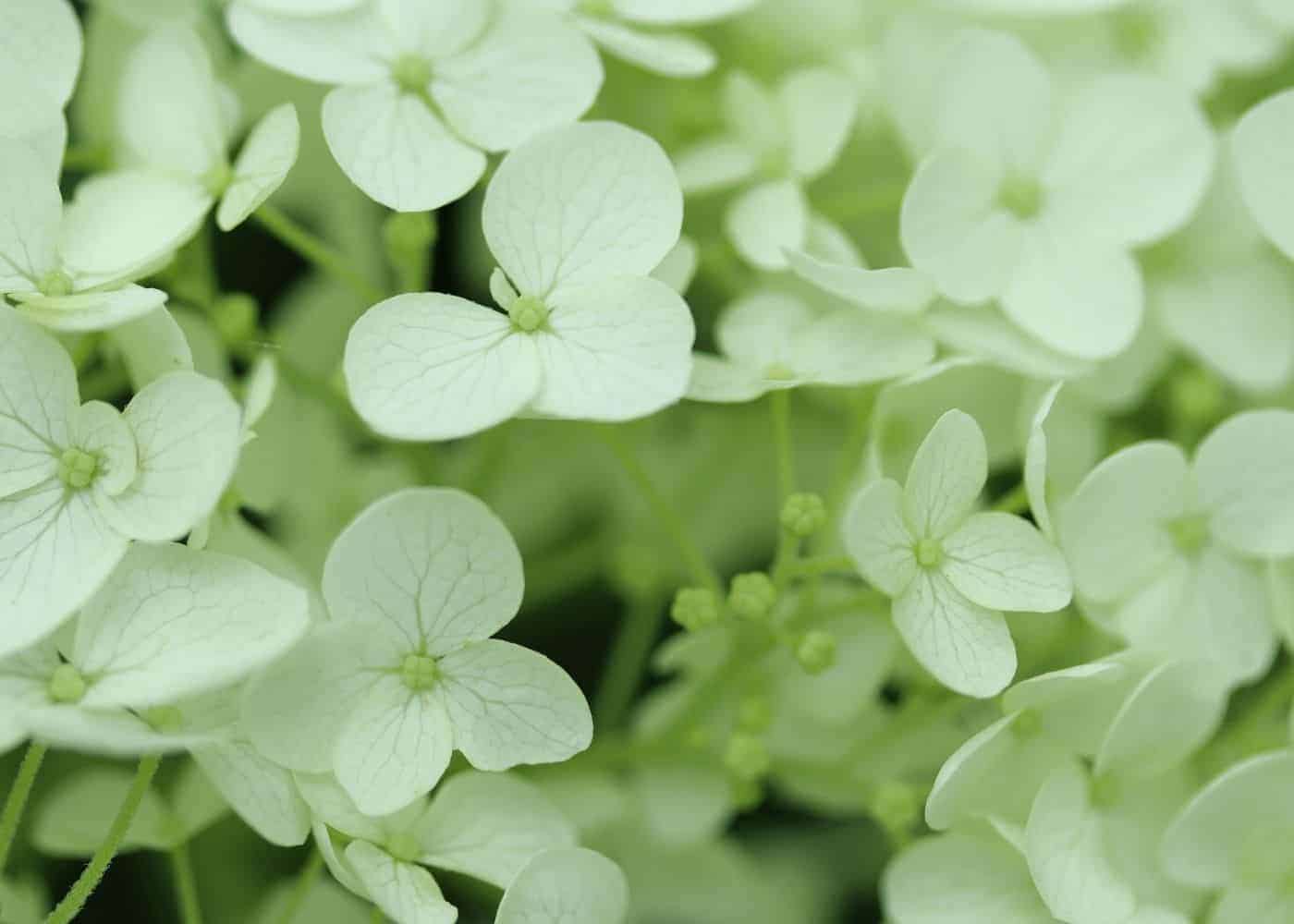
Diseases affecting Annabelle hydrangea
Annabelle Hydrangea plants are not commonly affected by plant disease, but there are a few fungal diseases that do sometimes make an appearance. The most common diseases affecting Annabelle Hydrangeas are root rot, botrytis, mildew, and mushroom root rot.
Root rot is a plant disease often caused by Phytophthora mold. Root rot tends to occur when soil is consistently quite moist and the air around the plant is humid and stagnant. One way to treat root rot is to stop watering and increase air circulation around the plant. Alternatively, transplant it to an area with better soil drainage. You can also try an organic fungicide after addressing problematic conditions.
While root rot is the most common, fungal infections like Botrytis and Armillaria can also occur. Botrytis fungus appears as a grey fluffy mold on flowers and sometimes on foliage. Armillaria (mushroom root rot) is usually identified by the golden mushrooms at the base of the plant. Both diseases are rarely seen on healthy, established plants that are maintained frequently with good pruning hygiene. Be sure to prune off any dead/diseased/dying stems as soon as observed, and also remove dead foliage. Lastly, improving air circulation may help in humid climates.
Sometimes mere overwatering or underwatering is the problem and will affect the upper parts of the plant rather than the roots. You will see similar symptoms to those of root rot (wilting leaves/flowers, soggy or rotting leaves, white powdery coatings, etc.). You can try adjusting your watering schedule to control this particular problem.
